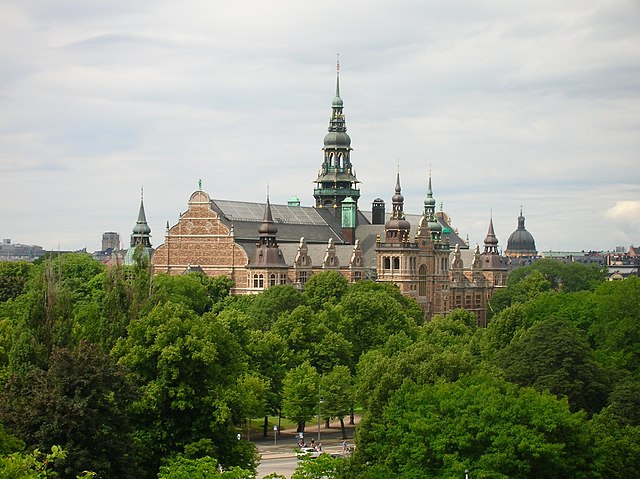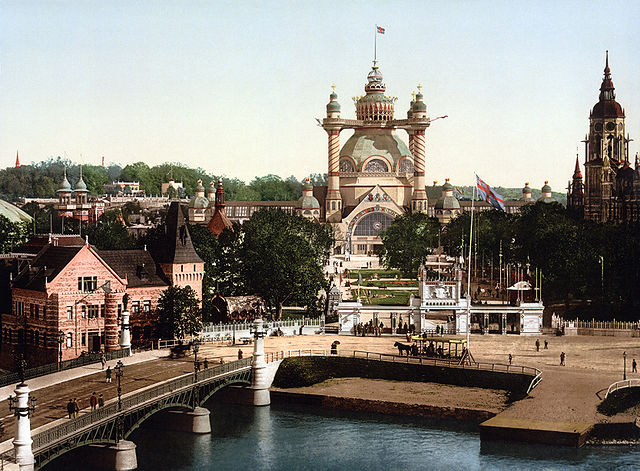The Nordic Museum is a museum located on Djurgården, an island in central Stockholm, Sweden, dedicated to the cultural history and ethnography of Sweden from the early modern period to the contemporary period. The museum was founded in the late 19th century by Artur Hazelius, who also founded the open-air museum Skansen. It was, for a long time, part of the museum, until the institutions were made independent of each other in 1963.
The Nordic Museum as seen from Skansen
The main hall.
The museum building.
Architectural plans of the museum
Djurgården or, more officially, Kungliga Djurgården, is an island in central Stockholm, Sweden. Djurgården is home to historical buildings and monuments, museums, galleries, the amusement park Gröna Lund, the open-air museum Skansen, the small residential area Djurgårdsstaden, yacht harbours, and extensive stretches of forest and meadows. It is one of the Stockholmers' favorite recreation areas and tourist destinations alike, attracting over 10 million visitors per year, of which some 5 million come to visit the museums and amusement park. The island belongs to the National City park founded in 1995. Since the 15th century the Swedish monarch has owned or held the right of disposition of Royal Djurgården. Today, this right is exercised by the Royal Djurgården Administration which is a part of the Royal Court of Sweden.
The Nordic Museum at Djurgården, facing south-west with Skeppsholmen, Gamla stan and Södermalm in the background
Detail from Vädersolstavlan showing Djurgården in 1535.
Photochrom print of the 1897 exhibition, digitally restored.
The shipyard on Djurgården's southern shore today.








